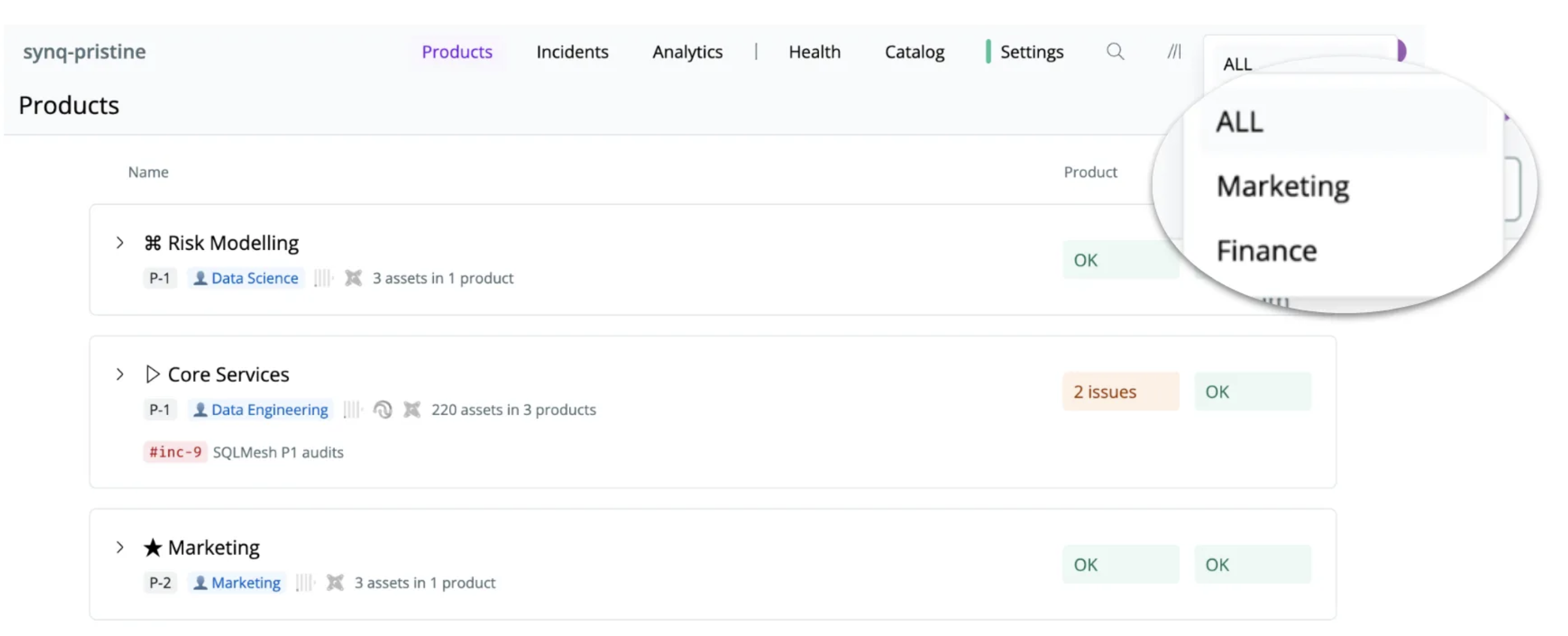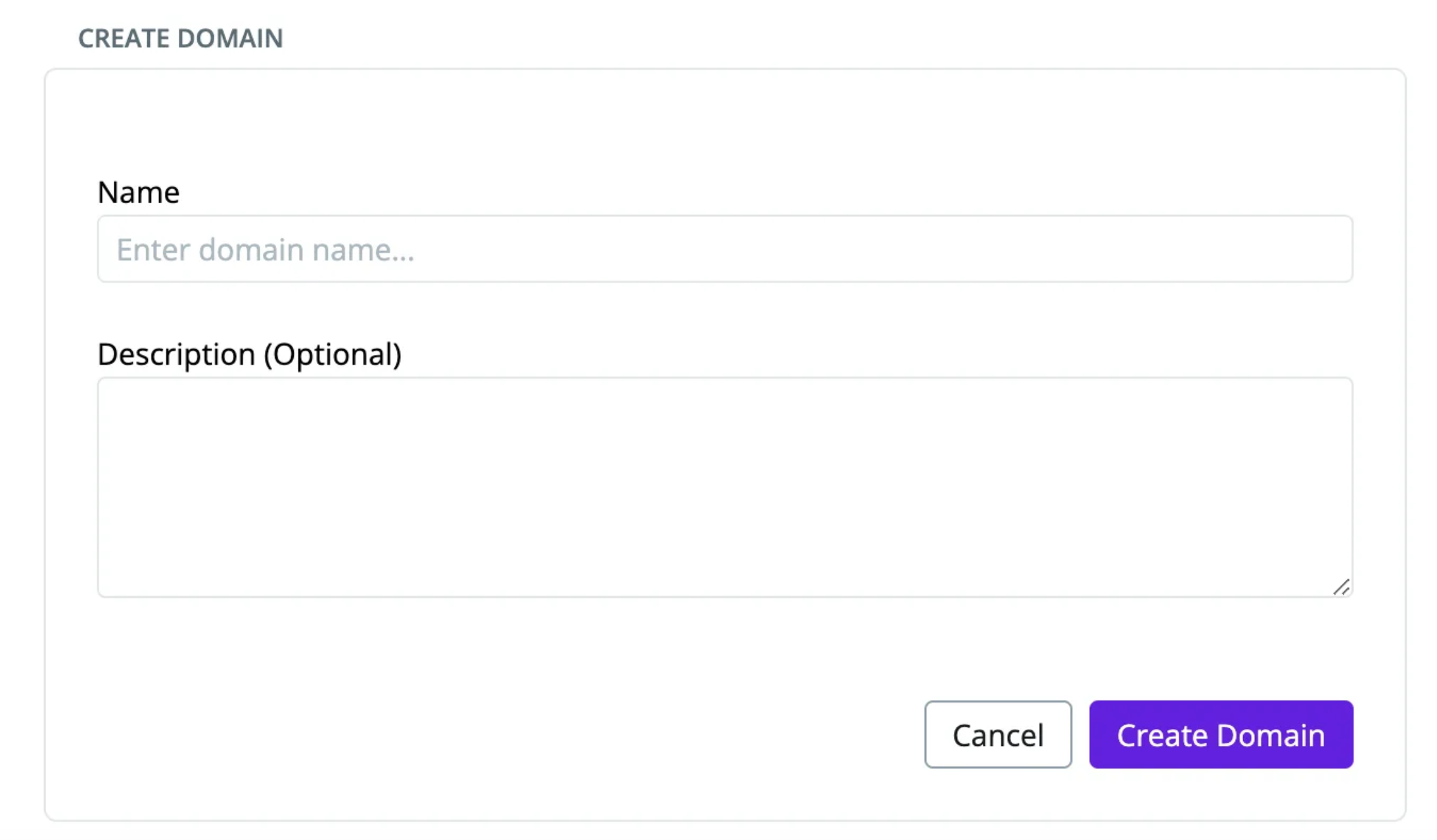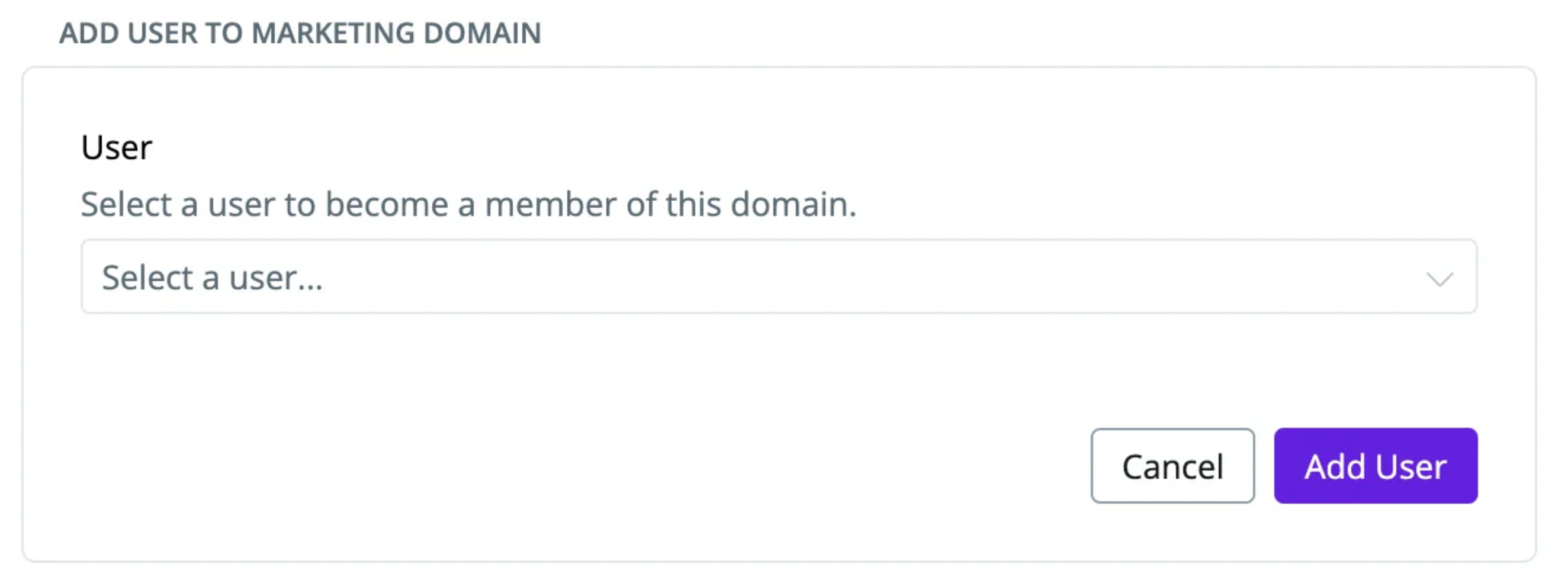Skip to main contentDomains in SYNQ help you organize your data assets. It’s a way to let people see only the data they should care about. Domains can be set to fit existing definitions (e.g., using dbt or SQLMesh metadata), or can have custom definitions built with SYNQ’s UI drop-down menu.
Quickly filter down key data assets by domain to see what matters to you. Members of your workspace can only see data that belongs to domains they’re in, helping you keep the simplicity in your SYNQ workspace as you scale.

Setting up a Domain
-
Navigate to
Settings → Domains and click Create
-
Give your Domain a name and a description

-
Click the newly created domain and select data assets that belong to the domain. This can be Data Products or individual data assets

-
Add members to the domain by clicking
Add Member. These members will belong to the domain and be able to see all the data assets you selected above. The member must exist in the SYNQ workspace for you to be able to add it.

Working with subdomains
Subdomains are helpful if you have larger domains (e.g., Marketing) with clearly distinguishable areas (e.g., performance marketing, brand marketing).
To set up one or more subdomains:
- Navigate to a domain
- Click
Add sub-domain
- Name your subdomain, and select relevant assets and members.
Member roles in domains
- Admin users can toggle between all domains, as well as see data across domains using the default
ALL domain selector.
- All other user roles will only see data for domains they belong to. Read more about SYNQ user roles. In cases where no domain has been set, all users will be able to see all data
You can select a member in the workspace, and click the three dots to set a domain as their default domain, which will make it their default data access each time they open the SYNQ platform,
How does the domain impact access to data
Domains provide a limited view into the data ecosystem for a user. While the limits are intended to help them focus on the data they are interested in, they will still be access any data asset in SYNQ, including the lineage in and out of their domain of interest. Domains are not meant to implement data access controls. We recommend that these controls should be put directly in your data storage (e.g., your data warehouse). 


